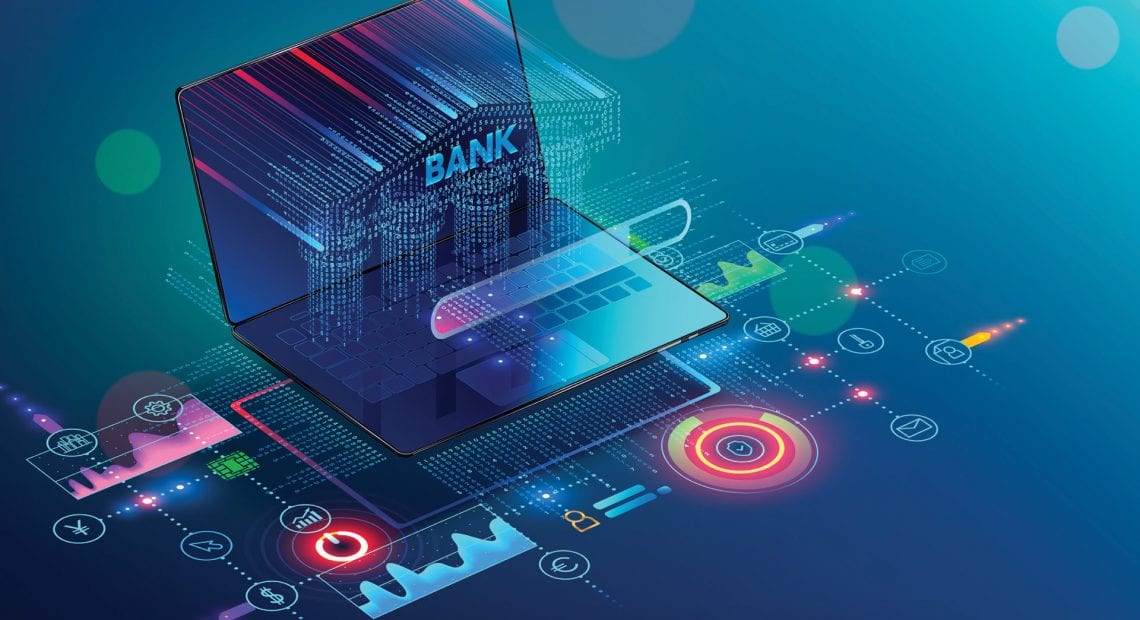
For Banks, COVID-19 Disruption Leads to Innovation
Lending a Hand
By Mark Morris

Sometimes being thrown into a challenging situation leads to … well, a good idea or two. Or at least a new way of thinking.
Back in March, when COVID-19 first hit, banks and credit unions in Massachusetts were designated essential businesses by Gov. Charlie Baker. That meant making sure everyone had access to their accounts while, at the same time, limiting in-person banking to appointments only, complete with masks, social distancing, and frequent sanitizing protocols.
“It forced us to think outside the box and to figure out the best ways to serve our members during a time of reduced access,” said Kara Herman, vice president, Retail Administration with Freedom Credit Union, adding that her team set out to first communicate all the options members had available to them to get business done without going inside a branch.
BusinessWest spoke with several local bank and credit-union professionals about the challenge of making adjustments to their businesses in the middle of a pandemic. For Kevin O’Connor, executive vice president and chief banking officer for Westfield Bank, reducing foot traffic in the lobbies back in the spring was a chance to review how to make customer interactions with the bank easier in ways that were not face-to-face.
“We published all our branch phone numbers on our website so people can easily reach their local branch,” O’Connor said. “In this way, we could blend the digital experience with the personal touch of a local branch staff member who is there to assist.”
During the summer months, mandates were relaxed, and banks and credit unions were allowed to reopen their lobbies to walk-in traffic. But this month, as COVID-19 infection rates spiked, lobby restrictions were reinstated at many institutions.
“Because we went through lobby closures back in the spring, we were able to refine the process of helping customers find different ways to accomplish what they need to do,” O’Connor said.

Mike Ostrowski says the pandemic has been a “disruptive innovation” that helped many customers appreciate the benefits of banking online.
For example, Westfield Bank makes video tutorials available online for those who are new to electronic banking. “We do this to encourage people to be comfortable in whatever way they interact with us.”
Michael Ostrowski, president and CEO of Arrha Credit Union, noted that, when lobby traffic was first curtailed and members would call to complete a basic transaction, his staff would take the the time to educate the caller on how to accomplish what they wanted to do electronically.
“In some ways, the pandemic was a disruptive innovation because it helped us to migrate so many people to the electronic world,” Ostrowski, said adding that online and mobile activity with Arrha has increased 30% in the last nine months.
Educating members is also the approach Craig Boivin, vice president of UMassFive College Federal Credit Union, has taken. While the aim is to reduce traffic in the branch, there’s still one in-person appointment that he encourages.
“A member of our contact center staff will set up an in-branch appointment with folks who aren’t as tech-savvy and take them through a hands-on tutorial on how to use what’s available,” he explained. “We do this so the member can avoid going to the branch in the future for simple transactions.”
Customers who regularly use online banking and mobile apps barely noticed the limited lobby access, but there are others who rely on being able to walk into a branch and do business face-to-face.
“Some of our customers need to come in every day, such as small-business people who need coin and currency to run their shops,” said Kate Megraw, chief operating officer and chief information officer for New Valley Bank and Trust. This past summer, while adhering to all safety and cleaning protocols, New Valley’s lobbies stayed busy.
Kevin O’Connor
“We published all our branch phone numbers on our website so people can easily reach their local branch. In this way, we could blend the digital experience with the personal touch of a local branch staff member who is there to assist.”
“As a new bank, we are in a growth mode right now, so we were trying to make it easy for customers to come in and open accounts,” she noted. With renewed limits on lobby access, she now encourages appointments as well as the drive-up location at the 16 Acres branch.
Drive-up banking has gone from a routine convenience to a vital service as customers bring more complex transactions to the drive-up window than in the past. It’s one way both bank customers and employees had to adjust to a new environment back in the spring — and may have to adjust again.
Striking a Balance
As branches reopened over the summer, loan activity related to the Paycheck Protection Program (PPP) ramped up as as well, Megraw said, providing another opportunity.
“The PPP allowed us to touch a lot of local businesses in Massachusetts and parts of Connecticut,” she added, noting that, through the PPP, New Valley arranged more than 500 small-business loans totaling nearly $90 million.
With branches retreating to a less-accessible time, the challenge now is to strike the right balance between giving people the time they need and keeping the line of cars in the drive-thru moving. Along with placing experienced tellers at the window, O’Connor said, other branch staff speak with people as they approach the drive-up to make sure they have their materials at the ready to make their visit more efficient.
Kate MeGraw
“The pandemic has shown us that high-touch customer service and the ability to speak to someone over the phone or safely take a meeting still makes a big difference when a customer is trying to get something done.”
UMassFive recently converted a drive-up ATM machine at its Hadley branch to a video teller. As a complement to the two existing drive-up tellers, the video teller provides a third option that reduces long lines and still maintains the personal touch.
“It gives our members an additional way to talk to a live person without having to come into the branch or get out of their car,” Boivin said. Installed in two other branch foyers, he added, video tellers have really caught on as usage has tripled just this fall.
Herman said Freedom recently launched video chat as part of its online offerings and said it’s the next best thing to an in-person meeting. “It gives people a chance to see us and talk to us. It’s face-to-face communication even though they are not physically in front of us.”
Because so many people are more comfortable doing things from their home, opening accounts online has substantially increased. While this tool was lightly employed before the pandemic, O’Connor saw an opportunity to enhance it for customers who use it.
“We are supplementing the online account-opening process by having a branch person follow up with the customer to make sure they received the experience they wanted,” he said.
On the lending side of the business, Herman noted that online applications and electronic signatures have further streamlined the process of people conducting bank business from home.
Boivin reported that volume at the UMassFive contact center is up 43% for the year and has nearly doubled in the last two months as coronavirus has spiked. A number of employees moved out of their traditional retail positions to handle the increased activity in the contact center.
“Our staff has been impressive with their flexibility and willingness to work in different departments to get the job done,” he added.
Ostrowski believes his staff were as vulnerable as essential retail workers who have been on the job throughout the pandemic. “Because we appreciate their hard work,” he said, “we recently rewarded our staff with a hazard-pay bonus for all their efforts during COVID-19.”
The People Part
As customers increasingly use online and mobile apps for banking, all the managers we spoke with agree that in-person branches still play a vital role. Ostrowski emphasized that technology doesn’t take the place of personal service, but just enhances it.
While acknowledging that digital services are an important and growing part of banking, Megraw also believes the “people part” is still essential.
Craig Boivin
“Our staff has been impressive with their flexibility and willingness to work in different departments to get the job done.”
“The pandemic has shown us that high-touch customer service and the ability to speak to someone over the phone or safely take a meeting still makes a big difference when a customer is trying to get something done.”
Boivin hopes the changes that forced people out of the branches will result in more convenience for them and an elevated role for the branches.
“In the long run, we see branches being centers where people can sit down with someone face-to-face for those in-depth conversations about their finances, such as buying a house for the first time,” he said. “We still see a need for those interactions to continue at the branch level.”
Ostrowski predicts banking will move toward a hybrid approach that combines the latest technology innovations with an old-fashioned, hometown banking experience.
“I like the term ‘the big hug,’ meaning, even if you do all your regular business electronically, there are times when you want to come in for a mortgage, or you’re having trouble with a tax bill, and we’re there to give you that big hug of caring service when you need it.”
Herman believes the events of the last nine months have caused banks to re-evaluate the roles and responsibilities that branch staff will have in the future.
“I think the traditional job descriptions we had back in February no longer exist, and they are evolving as we speak,” she said, adding that, while people will remain an important part of branch banking, the industry has to figure out how to serve the new needs their customers will have going forward.








